- Tactile experiences are more memorable than e-mails or other digital marketing messages that can easily be ignored or mass deleted.
- According to Keypoint Intelligence’s research, about two-thirds of respondents definitely or usually paid more attention to direct mail pieces that included personalization.
- Social media and streaming services are clearly effective among younger consumers, but this doesn’t mean that younger consumers don’t still enjoy receiving direct mail.
By Eve Padula
Introduction
In a digital world, direct mail remains a powerful and tactile marketing tool for reaching customers. When used correctly, direct mail can attract attention in ways that emails and online ads often cannot. At the same time, however, standing out and attracting attention involves more than simply showing up in a recipient’s mailbox. This article explores some strategies for creating direct mail that drives engagement and leaves a lasting impression.
Tips for Getting Noticed
Catch Their Eye
What is it about direct mail that often makes it more memorable than digital communications? For one thing, direct mail is tactile—it is a physical communication that must be picked up and handled. Even if the recipient discards a piece of direct mail soon after receiving it, they still have to hold it in their hand. Tactile experiences are more memorable than e-mails or other digital marketing messages, which can easily be ignored or mass deleted.
Keypoint Intelligence recently surveyed over 1,000 consumers about their experiences with direct mail. As shown in the Figure below, nearly 60% of consumer respondents agreed that direct mail pieces were more likely to attract their attention if the offering was of interest to them. In addition, 59% of total consumers had made a purchase in the past three months based on the direct mail they received.
Figure 1: Effectiveness of Direct Mail
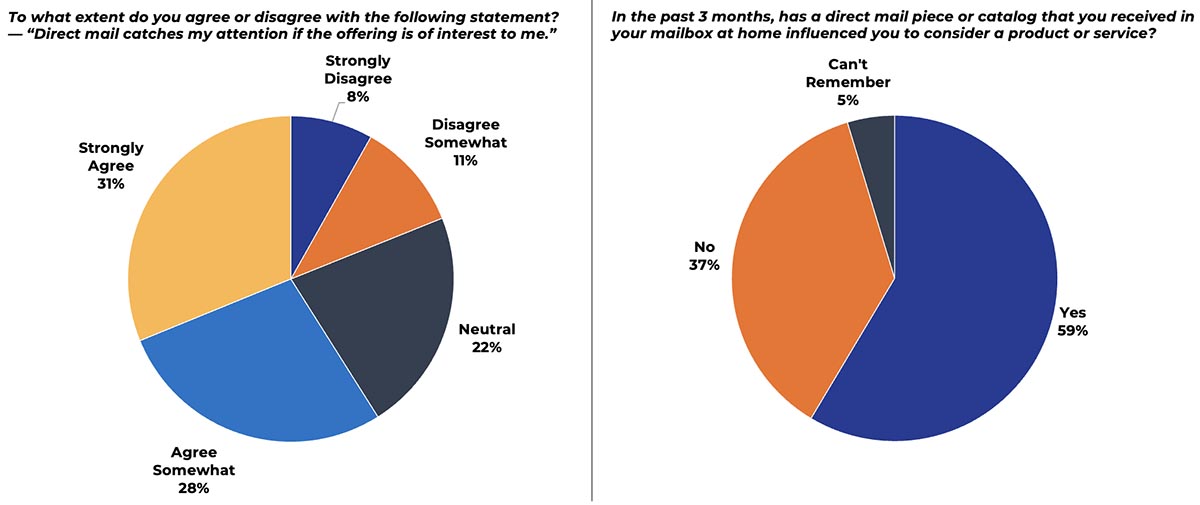
N = 1,004 Total Consumer Respondents
Source: United States Customer Experience Consumer Survey; Keypoint Intelligence 2023
Consumers are drawn to direct mail pieces that are catered to their personal needs and interests. Direct mail pieces will frequently result in sales too, so this is certainly not an avenue that can be ignored—even in a digital first world.
Make it Personal
It’s no secret that personalized direct mail stands out and attracts the recipient’s attention. Today’s consumers understand that the firms they do business with have a wealth of information about them, so they have come to expect a highly personalized experience. Personalized direct mail shows that a company has invested time to understand the recipient’s needs and pain points, which can positively influence their perception of the brand.
In the past six months, over half of consumer respondents recalled receiving a piece of direct mail that was clearly tailored to their interests or past purchases. Our survey data also shows that personalized direct mail is more effective—about two-thirds of respondents definitely or usually paid more attention to direct mail pieces that included personalization.
Figure 2: Personalized Direct Mail
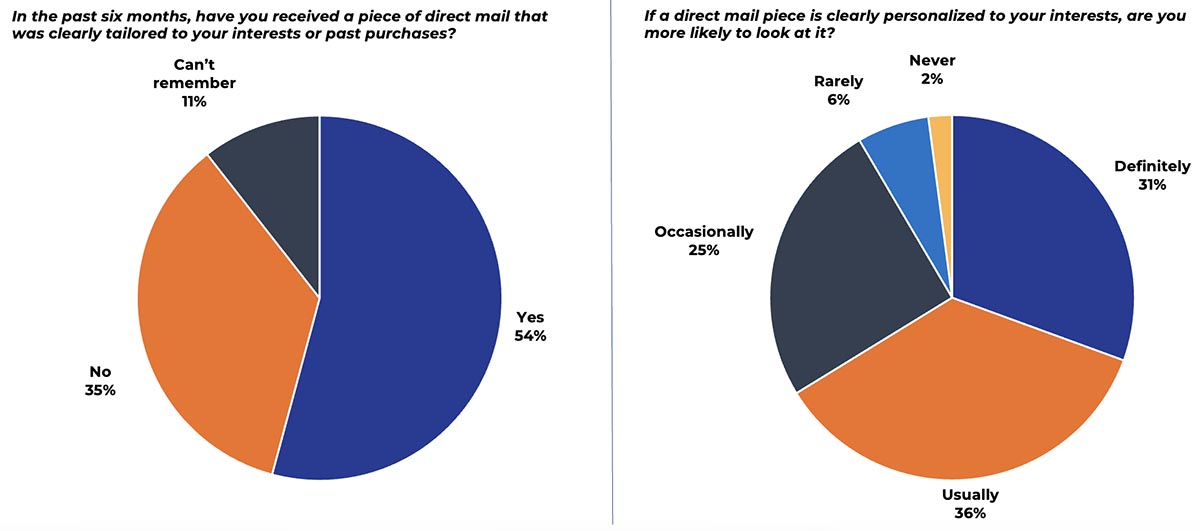
N = 1,004 Total Consumer Respondents
Source: United States Customer Experience Consumer Survey; Keypoint Intelligence 2023
Use Special Effects
Direct mail with specialty printing effects (e.g., raised surfaces, metallic colors) is another great way to stand out in a digital world. In fact, 60% of total consumer respondents reported that they would definitely or probably notice a direct mail piece with special effects. It should also be noted that consumers under the age of 43 were especially likely to notice these effects. The key takeaway is that younger consumers will still respond to direct mail—especially if it stands out in a way that attracts their attention!
Figure 3: The Effects of Specialty Printing (By Age)
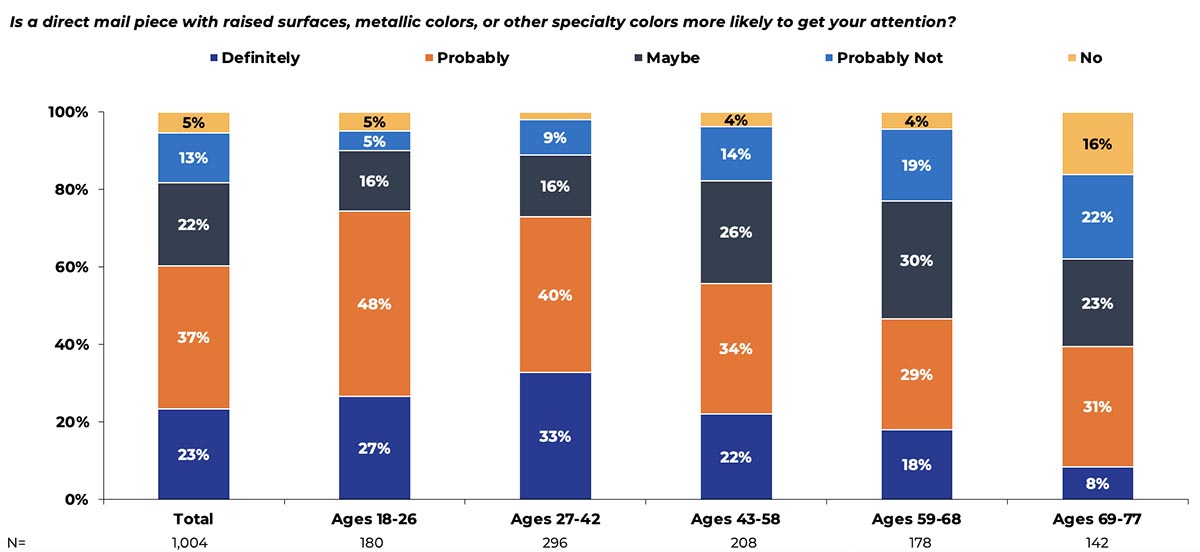
Base: Total Consumer Respondents
Source: United States Customer Experience Consumer Survey; Keypoint Intelligence 2023
Integrate Digital with the Physical
Another key benefit of direct mail is that it plays well with digital channels. For example, a printed postcard could include a link with directions to a physical location, or a physical brochure could include a QR code that leads the recipient to more information on the sender’s website. As shown in the Figure below, younger consumers are especially likely to notice digital links in catalogs or direct mail. In fact, over half of respondents between the ages of 27 and 42 frequently or sometimes scanned QR codes in the direct mail they received.
Figure 4: Frequency of Scanning QR Codes (By Age)
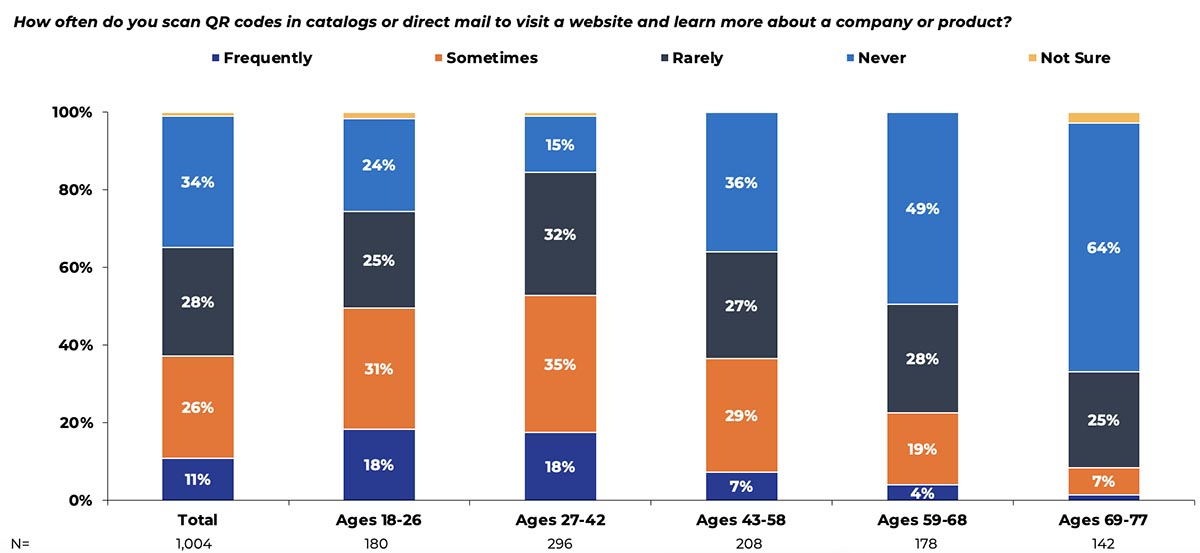
Base: Total Consumer Respondents
Source: United States Customer Experience Consumer Survey; Keypoint Intelligence 2023
Direct Mail Appeals to All Ages
When total respondents were asked to specify the types of advertising formats that most commonly attracted their attention, direct mail was the most popular channel. When these responses were segmented by age, some interesting patterns emerged. Although social media was the most popular channel for consumers under the age of 43, direct mail still cracked the top three among these younger respondents. Meanwhile, older consumers more strongly favored direct mail and catalogs in relation to their younger counterparts.
Table 1: Advertising that Attracts Attention
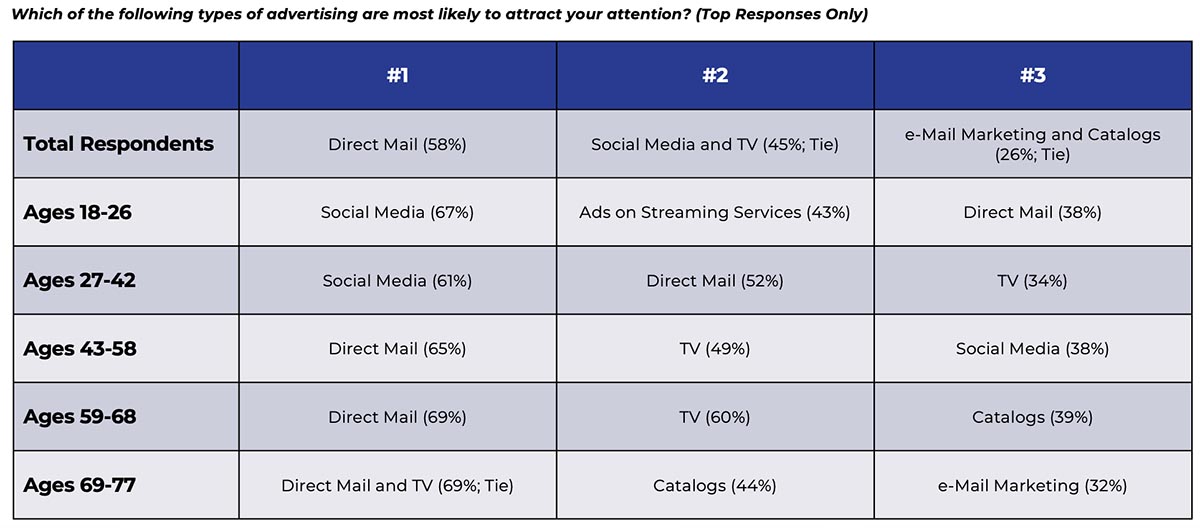
N = 1,004 Total Consumer Respondents; Three Responses Permitted
Source: United States Customer Experience Consumer Survey; Keypoint Intelligence 2023
Social media and streaming services are clearly effective among younger consumers, but this doesn’t mean that younger consumers don’t pay attention to direct mail.
The Bottom Line
Younger consumers may respond differently to direct mail than their older counterparts, but direct mail remains a top media choice among all age groups due to its tactile nature and the ease with which it can be linked to digital communications. Personalization, embellishments, and special effects are just some of the tactics that can be used to make direct mail stand out from the digital clutter. Use direct mail to attract attention and engage your recipients today!
Eve Padula is a Senior Consulting Editor for Keypoint Intelligence's Production Services with a focus on Business Development Strategies, Customer Communications, and Wide Format. She is responsible for creating, analyzing, and formatting many types of content, including forecasts, blogs, industry analyses, and research/multi-client studies. She also manages editing and client distribution for many types of deliverables.














